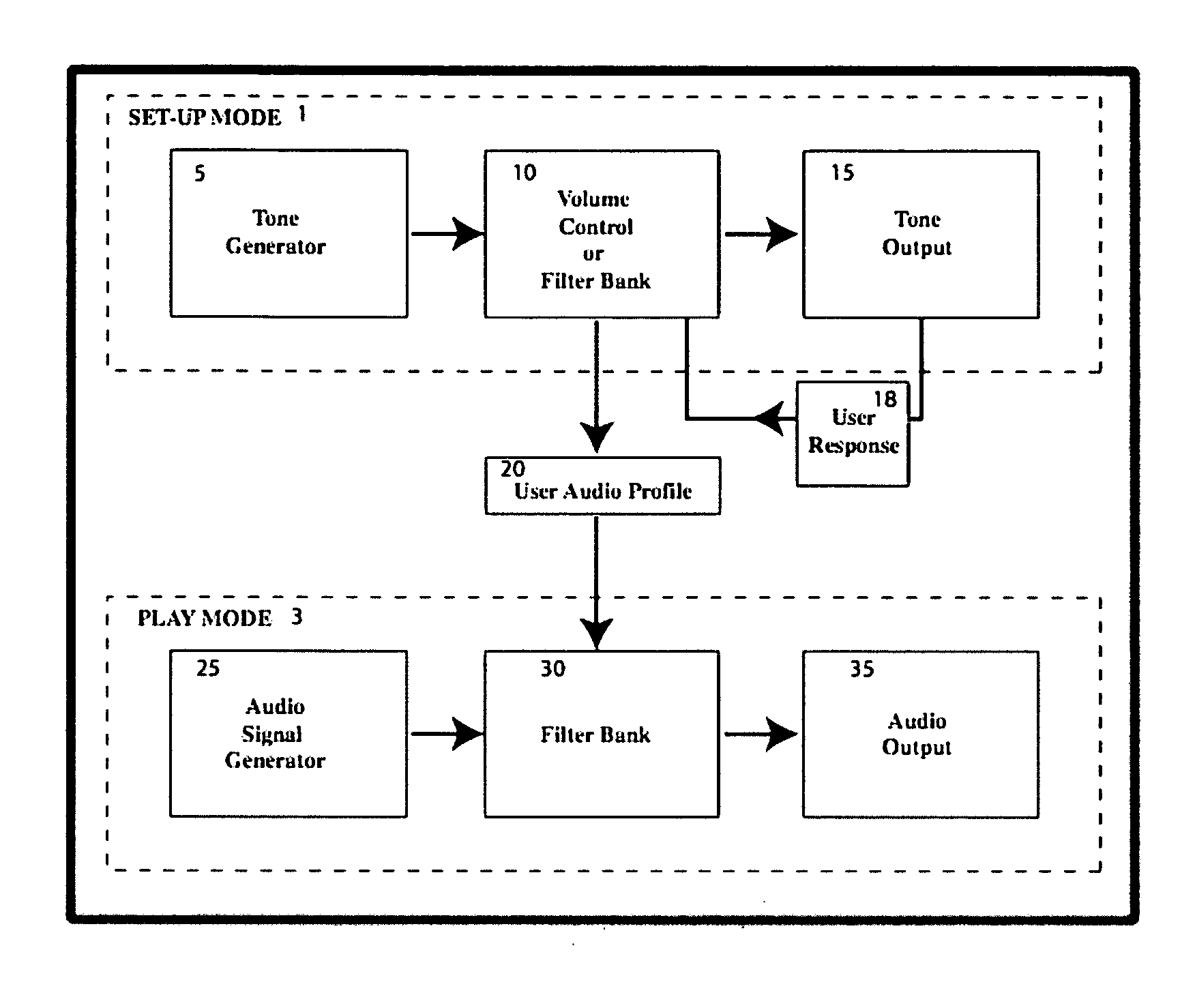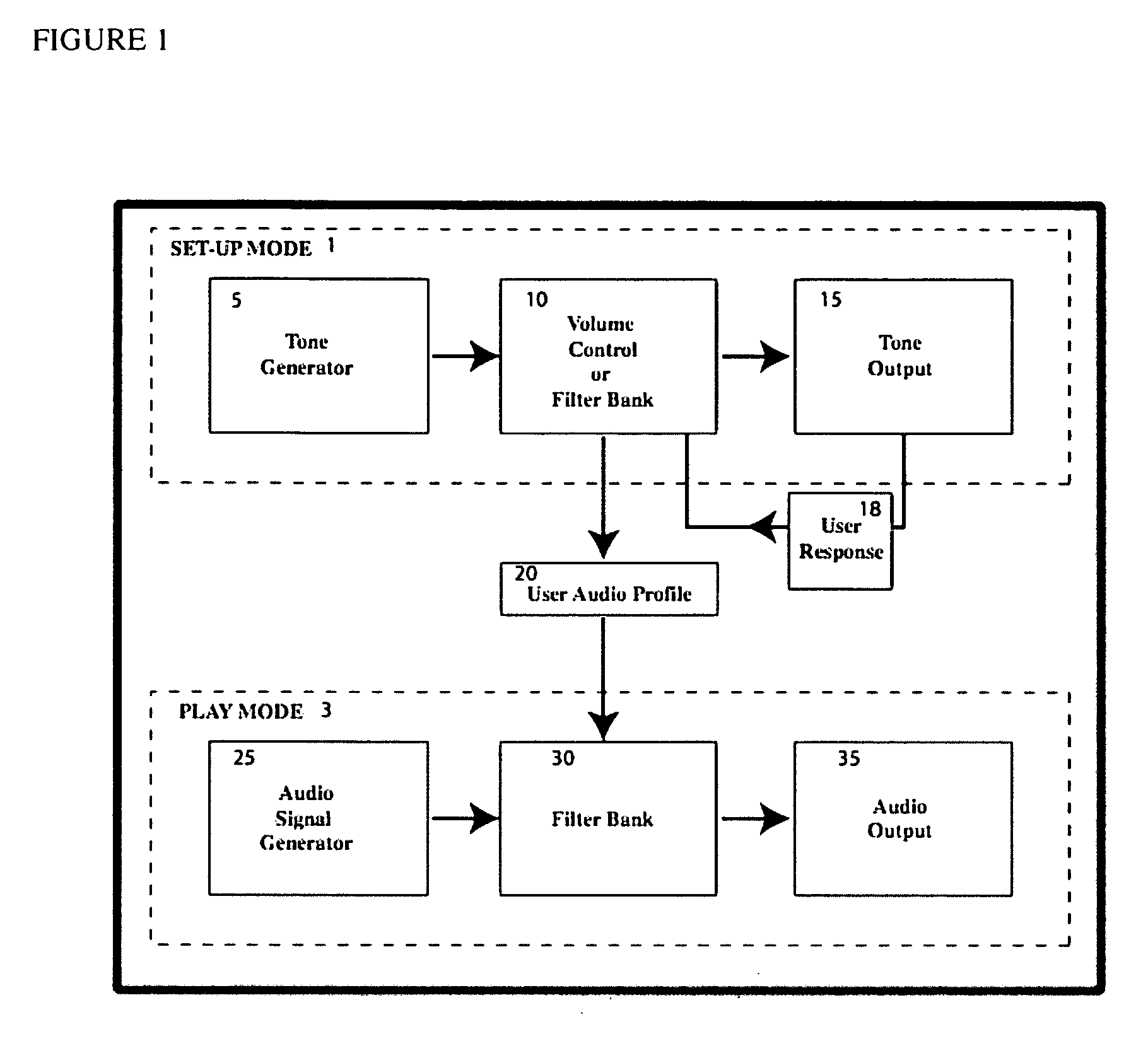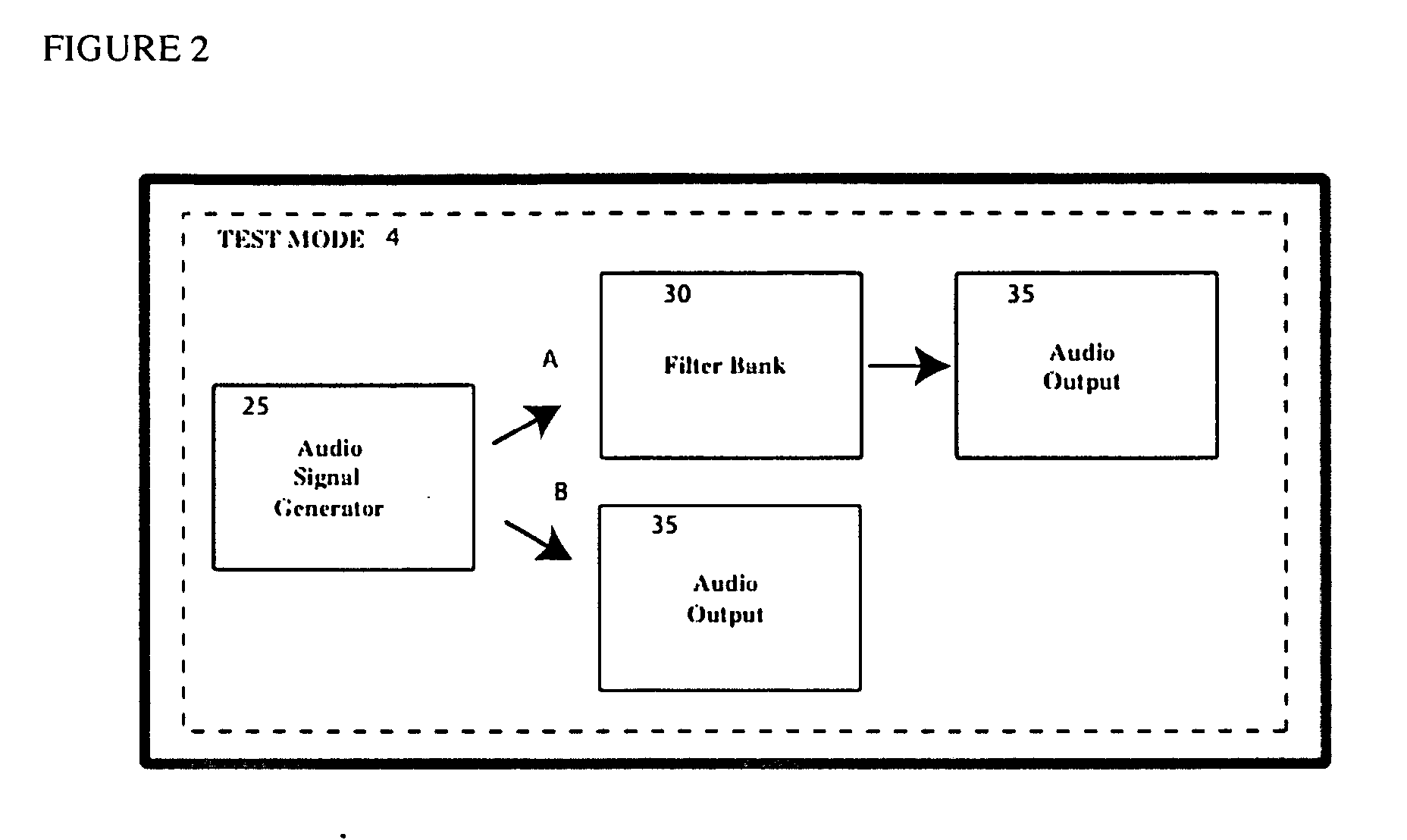Method and device to optimize an audio sound field for normal and hearing-impaired listeners
a technology for listening to normal and hearing-impaired listeners, applied in the direction of deaf aid adaptation, electrical equipment, etc., can solve the problems of carefully calibrated equipment, sound perception distorted relative to normal-hearing individuals, and the volume of turning up the volume on a stereo or other audio device does not generally correct for hearing loss, etc., to improve sound quality, improve sound quality, and improve sound quality
- Summary
- Abstract
- Description
- Claims
- Application Information
AI Technical Summary
Benefits of technology
Problems solved by technology
Method used
Image
Examples
Embodiment Construction
[0031] A detailed description of the various embodiments of the present invention is provided with reference to FIGS. 1, 2, 3, 4 and 5. The invention provides a method to optimize the audio output for a specific ear and this can be done without any additional equipment. Embodiments of this aspect of the invention are discussed below. However, those skilled in the art will readily appreciate that the detailed description given herein with respect to these figures is for explanatory purposes as the invention extends beyond these limited embodiments.
[0032]FIG. 1 illustrates a block diagram of the stand-alone system of the present invention that can optimize audio output for a given individual's hearing. The system is comprised of two functional parts: the set-up mode [1] and the play mode [3]. Electronic memory and logic, not explicitly indicated in FIG. 1, controls aspects of both modes.
[0033] The set up mode [1] is comprised of several steps that determine the hearing profile of a ...
PUM
 Login to View More
Login to View More Abstract
Description
Claims
Application Information
 Login to View More
Login to View More - R&D
- Intellectual Property
- Life Sciences
- Materials
- Tech Scout
- Unparalleled Data Quality
- Higher Quality Content
- 60% Fewer Hallucinations
Browse by: Latest US Patents, China's latest patents, Technical Efficacy Thesaurus, Application Domain, Technology Topic, Popular Technical Reports.
© 2025 PatSnap. All rights reserved.Legal|Privacy policy|Modern Slavery Act Transparency Statement|Sitemap|About US| Contact US: help@patsnap.com



